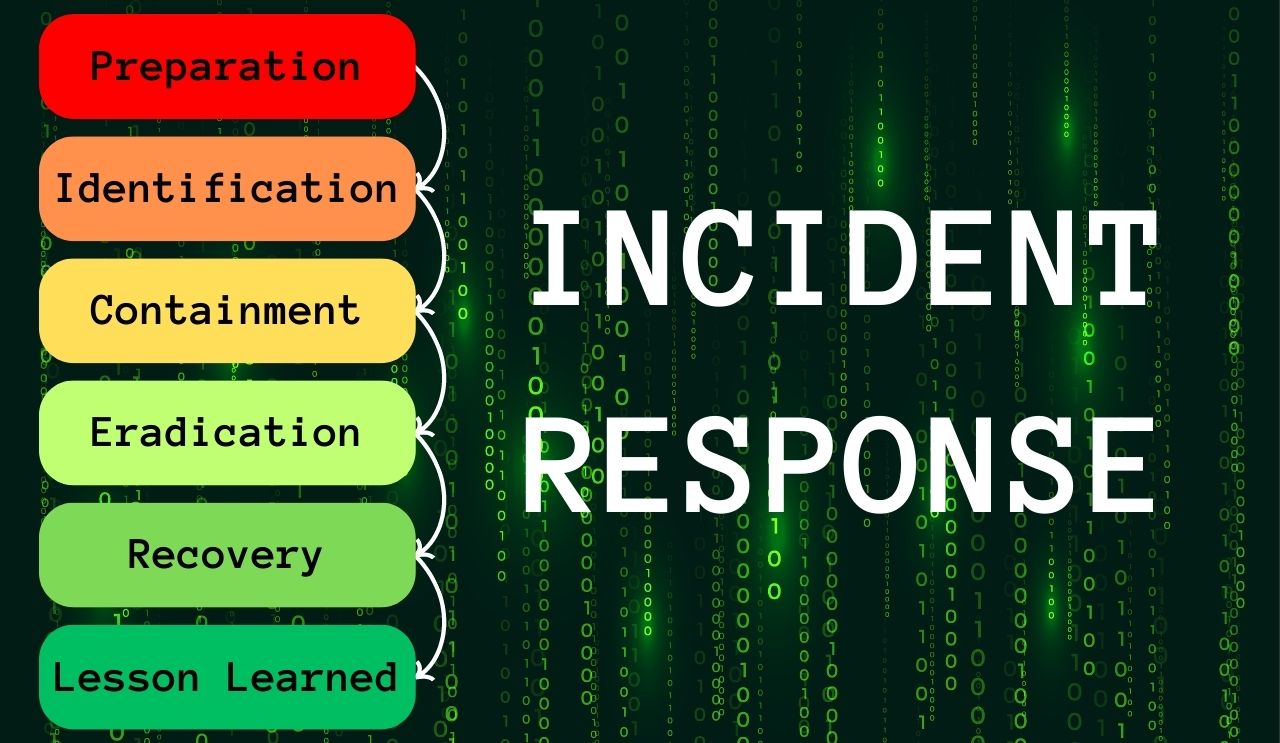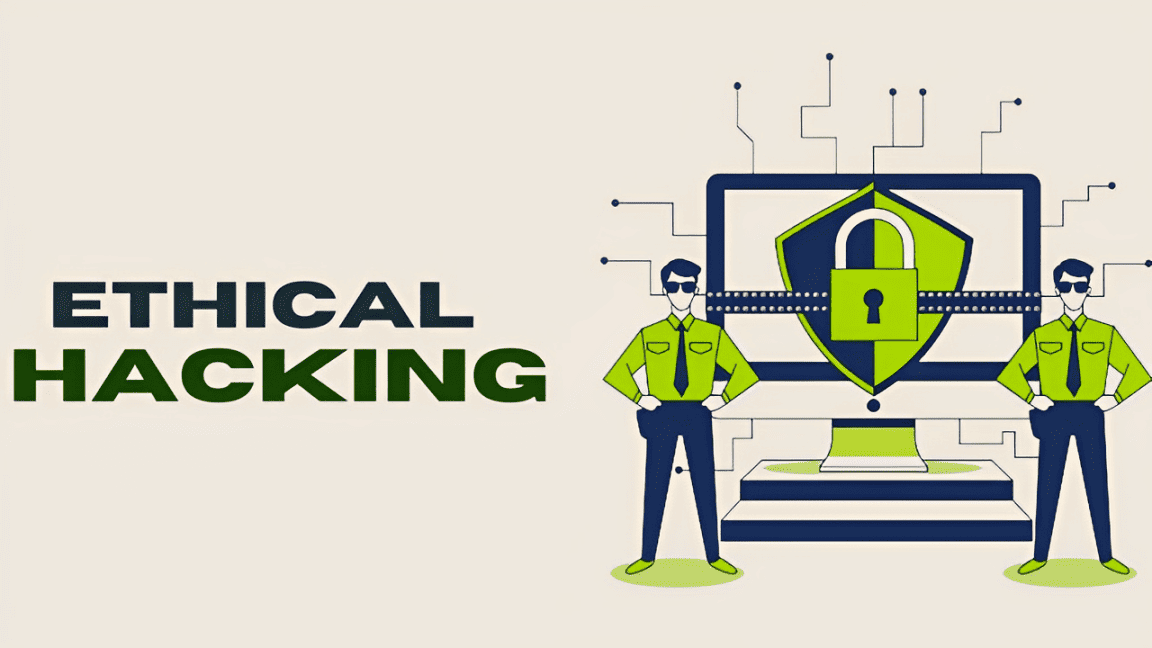Introduction :
An incident response plan is a crucial tool for organizations to effectively manage security incidents. By having a clear strategy, businesses can minimize potential damage, financial losses, and downtime. Moreover, it ensures compliance with laws, safeguards the organization’s reputation, and enhances response capabilities.
An incident response plan is a crucial tool for organizations to effectively manage security incidents.For a deeper understanding of the importance of incident response, the NIST’s Guide to Incident Response provides comprehensive insights.
These are the 6 incident response phases :
- Preparation
- Identification
- Containment
- Eradication
- Recovery
- Lessons learned

Here's a simple explanation of each phases :
1. Preparation: Setting the Stage for Effective Response :
- Establish an incident response team with defined roles and responsibilities.
- Develop a comprehensive incident response plan.
- Ensure the team is equipped with necessary resources: people, transportation, policy, space, data, power, software/hardware, communication, documentation, and supplies.
“Organizations establish an incident response team, define roles and responsibilities, and develop an incident response plan.”
key points of preparation:
- People
- Transportation
- Policy
- Space
- Data
- Power and Environment Controls
- Software/Hardware
- Documentation
- Communication
- Supplies
2. Identification: Recognizing the Threat:
- Detect suspicious activities through monitoring systems, logs, or reports.
- Train personnel to recognize and report potential threats.
- Maintain situational awareness and control the flow of information.
“Suspicious activities or security breaches are detected, and incidents are identified through monitoring systems, logs, or reports.”
There are few questions raise in this section:
How do you detect an incident ?
The trick is to give them training to know that something is wrong and make sure they aware of the risks and know to whom to report.
- Be wiling to alert early
- Points to keep in mind:
- Maintain situational awareness
- Fuse or correlate information
- Don’t be afraid to declare an incident
- Assigning Handlers
- Control the flow of information
- Communication channels
Identification can happen anywhere in the environment, but especially helpful zones for gathering events are :
- Network perimeter detection
- Host perimeter Detection
- System level detection
- Application level detection
The SANS Institute’s Incident Handler’s Handbook offers detailed guidelines on training personnel for threat detection.
3. Containment: Halting the Threat in its Tracks : The goal of the containment phase is to stop the bleeding basically to prevent the attacker from getting any deeper in to the impacted systems or spreading to other systems.
- Take immediate actions to isolate the threat.
- Implement short-term containment to prevent further damage.
- Collect evidence and ensure long-term containment.
“Immediate actions are taken to isolate and minimize the impact of the incident, such as disconnecting affected systems from the network.”
Sub-phases of containment:
- Short- term containment – just to stop the damage
- Evidence Collection – after that followed by collection evidence
- Long-term Containment – to make sure the bad guy is denied access.
4. Eradication: Eliminating the Threat Source : With the bleeding stopped, the goal of the eradication phase is to get rid of the attacker’s artifacts on the machine including accounts, malicious code, pirated software, or anything else the bad guy left on the machine.
- Identify and remove the root cause of the incident.
- Restore from backups and remove malicious software.
- Improve defenses and conduct vulnerability analysis.
“Find and remove the root cause of the incident, fixing any vulnerabilities.”
key points of Eradication :
- Restoring from Backups
- Removing Malicious Software
- Improving Defenses
- Vulnerability Analysis
For more strategies on improving defenses, CSO Online’s article on Incident Response Planning provides valuable insights.
5. Recovery: Restoring Normalcy : The goal of the recovery phase is to put the impacted systems back into production in a safe manner.
“Restore affected systems, use backups if needed, and gradually bring services back online.”
- Restore affected systems and bring services back online.
- Validate the recovery process and monitor for any signs of the threat returning.
key points in Recovery :
- Validation
- Restore Operations
- Monitor
- Looking for Artifacts to comeback
6. Lessons Learned: Reflecting and Improving : The goal of the lessons learned phase is to document what happened and improve our capabilities.
“Analyze the incident to learn from it, improve response procedures, and prevent future incidents.”
- Analyze the incident to derive insights.
- Improve response procedures to prevent future incidents.
- Document findings and apply necessary fixes.
Key points of lessons learned :
- Reports
- Meetings
- Apply Fixes
Real life Scenario :
Let’s say that a company’s security team receives an alert from their IDS that a suspicious file has been uploaded to one of their servers. The team investigates the file and determines that it is malicious code. They then isolate the server and begin containment efforts. Once the server has been cleaned, they restore the data from a backup and begin the recovery process. Finally, they review the incident and identify ways to improve their security posture.
Phase 1: Preparation
In the preparation phase, organizations should:
- Develop an incident response plan that outlines the steps they will take in the event of an attack.
- Identify and train key personnel who will be responsible for responding to incidents.
- Implement security controls to help prevent attacks.
- Gather information about their IT infrastructure and assets.
- Establish communication channels with law enforcement and other organizations.
Phase 2: Identification
The identification phase is when organizations detect that an attack has occurred. This can happen through a variety of ways, such as:
- Security alerts from intrusion detection systems (IDSs) or security information and event management (SIEM) tools.
- Reports from employees who notice suspicious activity.
- Audit logs that show unauthorized access to systems or data.
Once an attack has been identified, organizations should:
- Gather as much information as possible about the attack, including the type of attack, the systems or data that were affected, and the extent of the damage.
- Isolate the affected systems or data to prevent further damage.
- Begin containment and eradication efforts.
Phase 3: Containment
The containment phase is when organizations take steps to limit the impact of the attack. This may involve:
- Disabling or disconnecting affected systems or data.
- Patching vulnerabilities that were exploited by the attacker.
- Changing passwords and security settings.
- Restoring systems or data from backups.
Phase 4: Eradication
The eradication phase is when organizations remove all traces of the attack from their systems and data. This may involve:
- Running antivirus and anti-malware scans.
- Searching for and deleting malicious files or code.
- Reformatting or reinstalling operating systems and applications.
Phase 5: Recovery
The recovery phase is when organizations restore their systems and data to a state of normalcy. This may involve:
- Restoring data from backups.
- Reinstalling applications and operating systems.
- Reconfiguring systems and networks.
- Training employees on how to prevent future attacks.
Phase 6: Lessons Learned
The lessons learned phase is when organizations review the incident and identify ways to improve their security posture. This may involve:
- Implementing new security controls.
- Training employees on new security threats.
- Revising their incident response plan.
By following these six phases, organizations can effectively respond to cyber attacks and minimize the damage caused.
Conclusion: Incident response planning is not just about reacting to threats but learning and evolving from them. By understanding each phase of the process, organizations can be better prepared and more resilient against future challenges.




